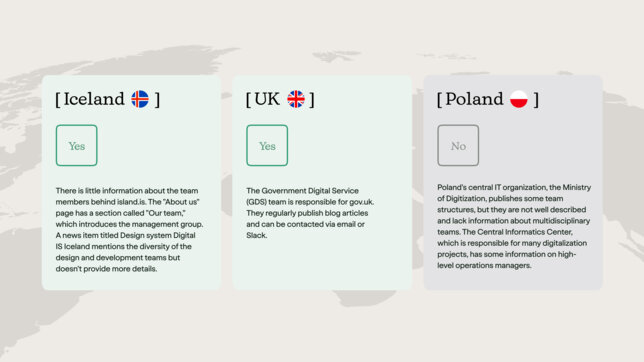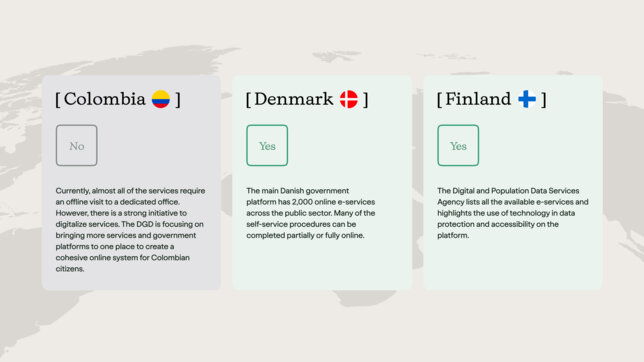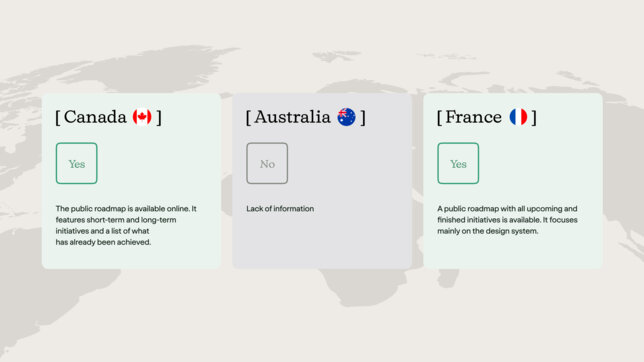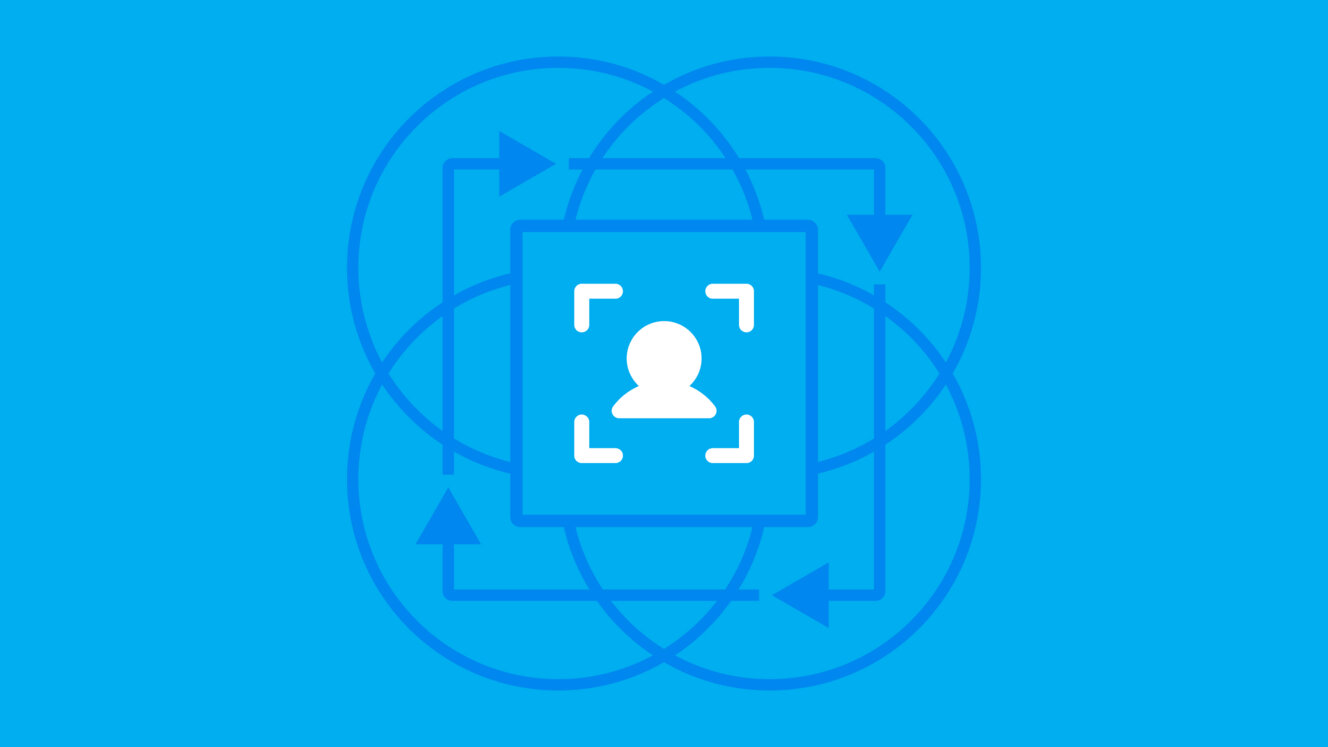
Piotr Golianek
-
Jul 05, 2024
-
14 min read
About Public Platforms
All of the actions we describe in this article are based on our report “State of CX in e-government platforms.” Our research and audits of 14 leading global public service platforms shed light on countries' readiness to provide services online. We want to underscore how crucial it is for governments to conduct such a digital transformation and create truly citizen-centric experiences to make their lives easier.
So, let’s get started and dive straight into the details of the public sector's digital transformation.
Digital transformation across the global public sector
The evolution of global e-government platforms has been really noticeable in the past few years. Governments are rapidly evolving, with digital public platforms and technology playing a crucial role in improving e-services. However, fully embracing this transformation presents significant challenges. Governments must provide an exceptional customer experience, as it is essential for cultivating trust and ensuring a positive perception and engagement with digital public services.
For an e-government platform to be successful, its design must instil confidence and satisfaction in its users. To accomplish this, you have to adopt design principles that will ensure the platform's success.
— Kamil Tatol, CEO Flying Bisons
Going further, the whole evolution had to start somewhere, right? So, what was that one moment that revealed the lack of digital transformation in public services globally? Well, as you might have already guessed – the COVID-19 pandemic. During this time, governments around the world prioritised online services, especially in health, education, and social protection. This effort resulted in a significant increase in the number of countries offering services online.
However, as stated in WGS’s Global Government Services Handbook 2023’s survey of e-government platforms – only 56% of respondents found the overall quality of services satisfactory.
That is why there was and still is a long way for governments to create a perfect, citizen-centric platform for their users.
— Robert Rostek, Polish Ambassador to the Kingdom of Saudi Arabia
Examples from global leaders
The significance of digital transformation in public services is best illustrated through real-life examples. That's why, in our report, we have compiled top examples from global leaders. This way, you can find inspiration for your own projects.
We have judged multiple platforms based on a couple of aspects:
- Easily accessible information about the team.
- Implementation of digital technologies and practices.
- Is a public roadmap available online?
- Human-centered design.
With those, we verified which countries check those boxes and which do not. Here are the results of our research:
Is it easy to access information about the team that is responsible for digital services and website development?

Are e-services available for users to complete processes online?

Is a public roadmap available online?

Are the processes created in a human-centered approach?

Strategic advice for governments
After reviewing the best examples, it is time to dive into the most interesting part for you – advice on creating an exceptional public e-platform. So, get your notes ready and let’s get straight into it.
Drawing inspiration from global leaders
To maximise the performance of the e-government ecosystem, administrators need to carefully monitor, analyse, and implement solutions that outperform their counterparts. This systematic approach yields the following advantages:
- Adaptation of best-in-class solutions: Regularly examining successful models allows platform administrators to identify areas for improvement. This commitment to ongoing learning and adaptation ensures that the platform remains dynamic, responsive, and aligned with the evolving landscape.
- Efficient problem solving: Analysing successful models used by global leaders can help decision-makers learn from the experiences of those who have faced similar issues and succeeded instead of relying solely on trial and error. This approach can reinforce the refinement process and enable the implementation of solutions that have proven effective across different contexts.
Fostering a technical innovation mindset and skills
To achieve leadership in digital transformation, administrators of e-government platforms need to form a professional team, foster an innovative mindset, and deploy advanced technological solutions.
- Adaptation to progressive technologies: Embracing a technical innovation mindset drives the implementation of cutting-edge technologies like AI and adaptations to technological advancements that ensure continuous evolution. This adaptability improves the user’s experience and keeps the platform up-to-date with technical progress.
- Fast development: Fostering an innovative mindset allows for rapidly implementing new ideas and solutions and visualising them on public roadmaps. This empowers the platform to respond proactively to evolving needs.
- Positioning as a pioneer: By actively seeking and implementing new technologies, administrators ensure the government platform offers fully automated processes and remains competitive and efficient. This approach positions the government platform as a pioneer, showcasing leadership in adopting and implementing cutting-edge technologies.
Crafting a compelling brand identity
Gain recognition in the market by establishing robust identity guidelines and style guides, which should be consistently applied across all visual and written communication, both on and off the platform. This approach provides several benefits:
- Enhanced platform credibility: Establishing a strong brand identity creates trust and credibility among users. This helps build the public’s confidence and encourages them to engage with and depend on the services provided by the platform.
- Reinforced recognition and sustained engagement: Consistently applying the elements of the government brand identity helps administrators communicate more efficiently with users, who can easily recognise and associate with the government’s visual style and imagery.
- Elevated global influence and attention: A strong brand identity can help administrators establish the government platform as a high benchmark, providing significant benefits. This status can enhance the platform’s influence and attract positive attention globally
Facilitating applications via e-services
To enhance citizens' access to government services from their homes, digital public platforms ought to offer online access to processes, user-friendly flows, and the capability to track the status of online applications. Embracing this strategy offers such benefits as:
- Efficient online case handling: Facilitating streamlined online application processes allows users to handle their cases entirely through digital channels. This approach eliminates the need for physical visits, providing users with a convenient and efficient way to process their cases remotely.
- An index of available e-services: Creating a navigable list of prominently labelled and systematically organised e-services within the platform significantly enhances the digital user experience. Their clear visibility within the interface allows users to swiftly locate and initiate online application processes.
Ensuring compliance with Web Content Accessibility Guidelines
To guarantee effective navigation for all users, including those with accessibility issues or social exclusion, it is crucial for the government platform to meet the WCAG requirements. Equally important is the promotion of effective communication and the cultivation of positive relationships, in addition to actively working towards creating a platform that is technically accessible and inclusive. With this approach, you ensure such benefits as:
- Streamlined access for everyone: Prioritizing accessibility and adhering to WCAG rules ensures that all users, including those with diverse abilities, can navigate and engage with the platform effortlessly. This commitment to inclusivity, a shared responsibility between designers who envision accessible interfaces and developers who bring these solutions to life, enhances the effectiveness of service requests and facilitates users’ goal achievement.
- Reinforced public trust and a positive image: Demonstrating dedication to inclusivity builds trust and improves the public’s perception of the platform. Users value a government website that emphasises accessibility and reinforces that public services are designed with everyone in mind.
If you want to learn more, check out our Digital 101 page and a dedicated article on WCAG guidelines.
Pursuing technical optimisation
To reach a wider audience and provide a smooth and efficient experience to all users, e-government platforms should be compatible and keep up-to-date with diverse devices, operating systems, and web browsers. Adopting this approach can bring the following benefits:
- Consistent and functional cross-system experience: Prioritizing technical optimisation and support for multiple operating systems and web browsers provides users with a seamless and functional experience, regardless of their device. A platform that is compatible with different systems can reach a wider audience because it is more accessible.
- Effective administration and maintenance: Technical optimisation facilitates efficient platform administration and cost maintenance. It reduces troubleshooting complexities and ensures a robust and reliable government service infrastructure by prioritising compatibility and performance.
Designing for diverse touchpoints
To create a government platform that is functional and visually appealing on mobile, desktop and tablet, it is crucial to design it according to typical usage contexts and preferences. This approach offers the following benefits:
- Optimised mobile experience: Implementing user experience patterns customised for mobile devices guarantees an intuitive interface that accommodates touch gestures and optimal spacing. This design approach ensures seamless navigation for users accessing the e-Government platform on smartphones and tablets.
- Efficient task completion in diverse circumstances: Enabling support for multiple types of devices allows users to effectively complete tasks in various situations and locations, enhancing their convenience and productivity. Responsive design is particularly vital in the context of e-Government platforms serving large populations.
Summary
The COVID-19 pandemic spurred governments to accelerate their digital transformation efforts and highlighted the need for a cohesive approach to modernising digital capabilities. However, there is still a significant disparity in the digital readiness of public services worldwide, with successful implementations emphasising the importance of providing accessible tools for citizens to engage with their governments.
The seamless integration of services within a unified ecosystem is a cornerstone for building user trust and familiarity. Standardised guidelines and components streamline platform maintenance and scalability, underscoring governments’ commitment to quality and user-centric design principles. The ultimate goal is to create a customer experience that ensures that users navigate public platforms effortlessly and securely. As we look to the future, our team of experts is ready to assist you in staying ahead of evolving user needs, technological advancements, and megatrends in the landscape.
So, if you need any help in preparing your own digital transformation, we would be more than happy to assist you. Just send us a message with a short description of your project and your needs.




















